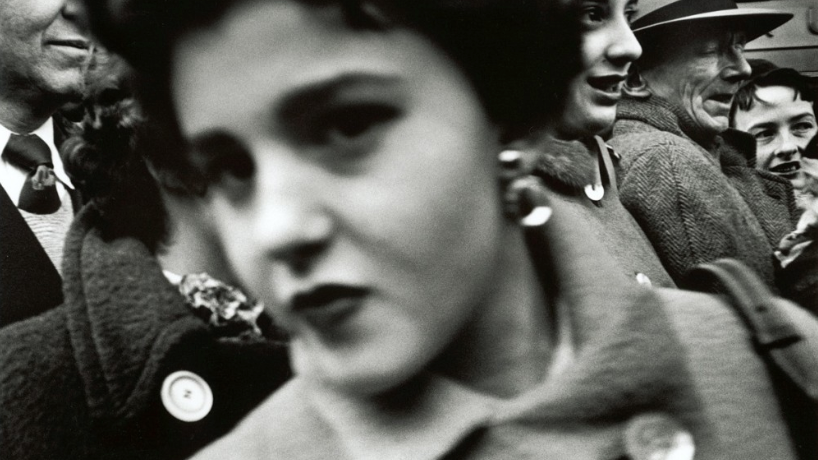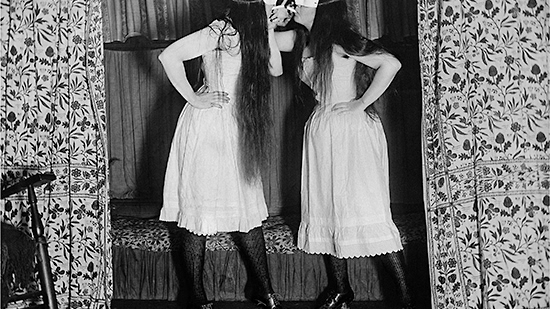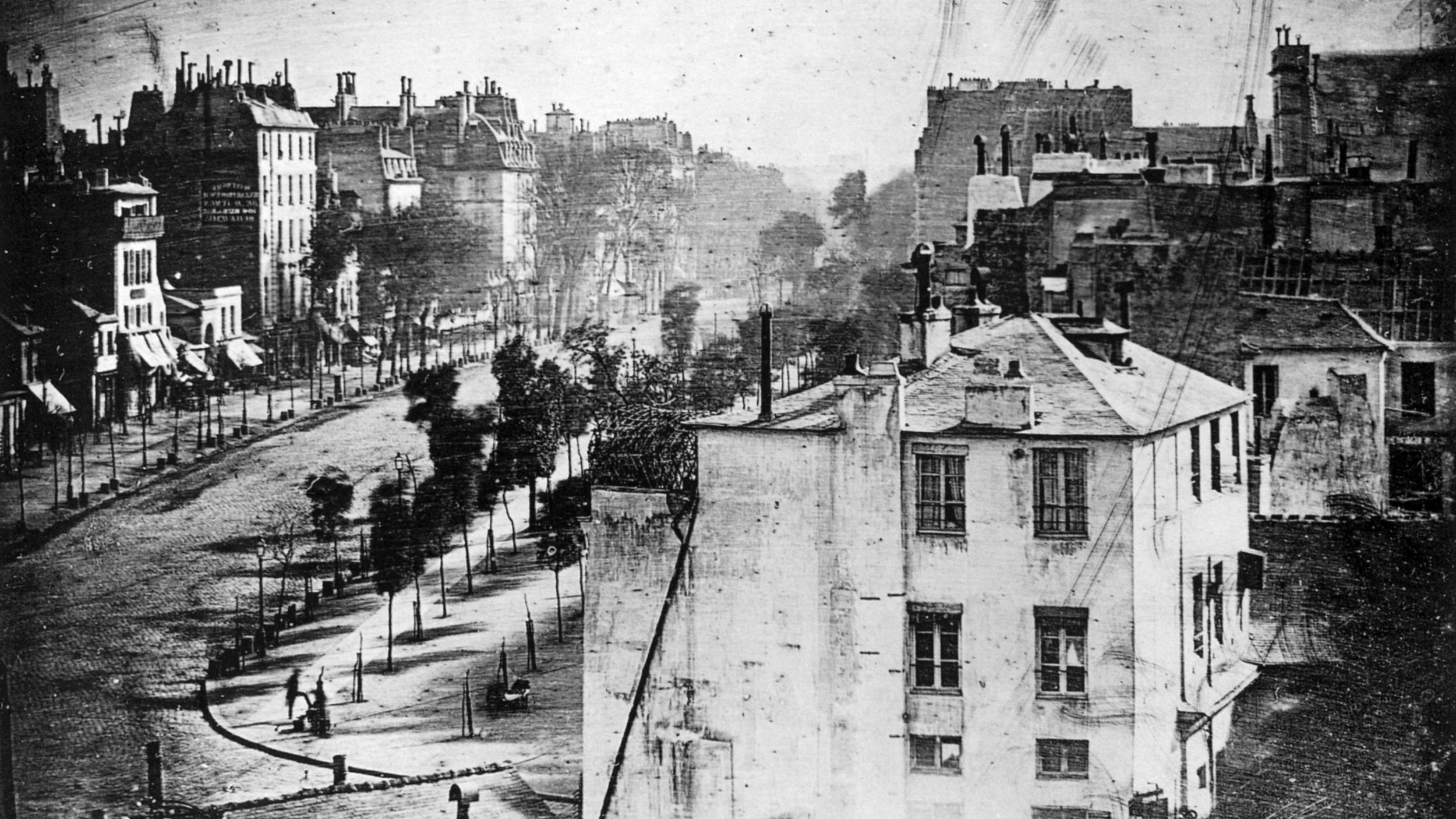The Rise and Rise of Madame Yevonde
She just had a solo exhibition and influenced Miu Miu’s campaign. Who is she? and what’s next?
Self Portrait (1940). Madame Yevonde via National Portrait Gallery, London.
Madame Yevonde is the MOTHER of color photography and she is so coming. Yes, I’m talking about the photographer who died 29 years ago. How photography history neglects her contribution to the industry for years and years make her reputation sleeps for a long time after the continuing rise of her expanding 60 years career, and now, huge bouquets for a new generation of curators and art directors, Yevonde is rising up again from sleep and start inspiring and influential as she deserves to be.
If she was a man, I would never see this happen to her. “If we are going to have color photographs, for heaven's sake let's have a riot of color, none of your wishy-washy hand-tinted effects.'' She stated to the Royal Photographic Society in 1932 among her peers who, from the common belief at the time that B&W photographs are where talent is, see her color portraits ‘decadence’ - lame. Still, she continued doing what she believed and became even more successful than before, years later her works got declared undebatable genius. Her story is the similar pattern of what we, as a society, love to put the ‘photographer who ahead of their time’ myth into. She got that original style for niche and story for mass, the only thing I can think of that written her off from every textbook and online articles is, unsurprisingly, patriarchy.
Joan Maude (1932). Madame Yevonde via National Portrait Gallery, London.
Because Madame Yevonde was a fearless woman and never tried to be deceptive as otherwise. Growing up from upper middle class family in the turning of the century when Suffragettes movement went strong, she was studying photography under Lallie Charles, a Suffragettes sisterhood, commercially success woman portrait photographer, and open her own studio in 1914 at the age of 21 in the same building with Women’s Organizations. She advocated for women photographers, one of her famous quotes “portrait photography without women would be a sorry business.”, and she was actually doing what she said, welcoming other women aspiring to be photographers or assistants in the studio to study under her wings. She collected clients from socialites and royals, unstoppable success. Being independent financially and creatively. Her works were never lacking of femininity, and they never be sorry to not appeal to a male gaze.
Lady Campbell as Niobe (1935). Madame Yevonde via National Portrait Gallery, London.
Dorothy Gisborne (Pratt) as Psyche (1935). Madame Yevonde via National Gallery, London.
Thinking about her most famous series now, The Goddess and Others (1935), I can see that it declined at that time because of how it was understood by the patriarchal lens. Looking back, the series was a huge rejection of what male-gaze sees as virtue, as talent, as serious, as beautiful. In the series, Madame Yevonde photographed guests from ‘Galaxy of Goddesses’ in their same costume as they wore to the charity ball of the same name. Classical myth was a go-to theme for photographers in the early 20th century influenced by paintings. Yevonde’s goddesses were not fairy-like and soft-touch as others, they were a riot of everything, left alone color. The special effects were camp, the scenes were vivid, the costumes were over the top, and the poses were theatrical. It was written off as tasteless and lacking in elegance (keep in mind that the popular photographer then was Cecil Beaton), and in fact, this is not even an easy, fun job. It was more complex in the making compared to the other photographs out there.
Color photographs were very new then, and the process that was stable enough to use in the studio photography, Vivex, was, in her own words “vilely expensive” and “very complicated”. It was very expensive and complicated that not any studio used it except hers, making Madame Yevonde a pioneer of color photography. The process uses the Trichrome method, CMYK color. In one shutter release, 3 photograph plates in yellow, magenta (pink-purple), and cyan (blue) filters were exposed, and then in a darkroom, transferred to thin cellophanes then layered to appear colors. Vivex consisted of eighty steps and twelve hours to complete, and Madame Yevonde not only perfected it but experimented to manipulate color by both camera and darkroom techniques, creating new shade of colors and effects to photographs.
Lady Bridget Poulett as Arethusa (1935), Madame Yevonde via National Portrait Gallery, London.
Lady Milbanke as Penthesilea, Queen of the Amazons (1935), Madame Yevonde via National Portrait Gallery.
To re-contextualize and understand in the new calibrated light you have to be in a different way of thinking, and I can see now that things are continuing changing in a very best way possible. After long rest, Goddesses and Others (1935) was purchased by the National Portrait Gallery in London, funded conservative process of Chanel Culture Fund, and last year, 2023, exhibited in the name of Yevonde: Life and Colour, curated by Clare Freestone, accompanied by the comprehensive retrospective book. Madame Yevonde started to be seen as brilliant as she was, and her works as visually stunning as they’ve been surviving 70 years and still relevant than ever.
In our age of male-gaze degradation - combination and related to another, online rise of girl aesthetics and boo to toxic masculinity, increased number of women in charge in creative fields, and awareness of gender issues in mainstream, Madame Yevonde’s works are talking directly to a growing independent feminine population. She can be a grown-up sister of glossy sassy Y2K that has had her moment in the past couple of years. The works offer an aesthetic of female-gaze that we crave and haven’t explored yet, with enough fantasy and dreamy to be an escape territory and talk of the internet. In fashion, Miu Miu just referenced Madame Yevonde in their new campaign modeled by Gigi Hadid and shot by Steven Meisel, and I can see John Galliano’s cherry-on-top coming back at Maison Martin Margiela’s porcelain doll show is a catalyst for excessive drama photo shoot to be the next big thing. See the same characteristic as Yevonde’s recently, color-driven and theatrical, in Vidar Logi’s Bjork shoot for Vogue Scandinavia or Nadia Lee Cohen’s sexy nun Rihanna for the Interview Magazine.
What I really hope is, she will not be just a trend in the reference board, Madame Yevonde has to be a staple in textbooks. Whenever whoever talks about the pioneer of color photography, we don’t just jump into Eggleston, but acknowledge color photographers before that. It was hard work of hers choosing a hard path creating works and ‘be original or die’ in the very boy club society then, and we cannot forget about people after her who preserve her works, keep fighting for her righteous place in photography history. In this very crucial time, it is also hard work for us, to keep talking about that and not let her riot colors fade away.
Lady Diana Mosley as Venus (1935), Madame Yevonde via National Portrait Gallery, London.
Reading list



